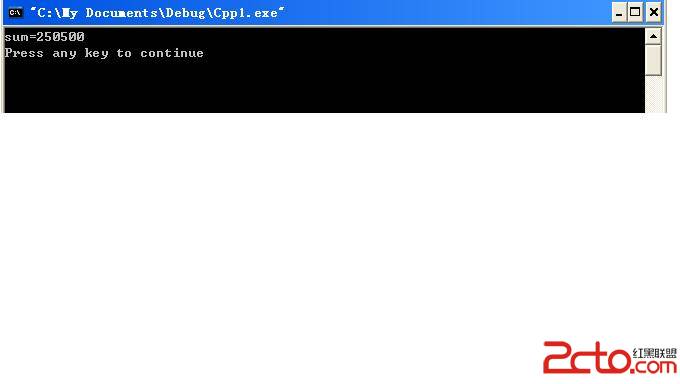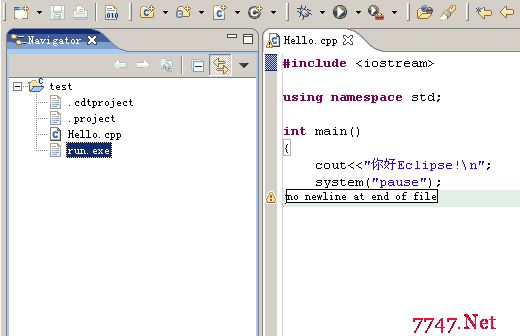算法数据结构C++实现6 - 行排序 列排序 Column sort
Introduction to Algorithm 算法导论第八章的Column sort是非常有趣的,相当复杂。要用C++是实现起来是很困难的,因为需要用到几大块的小算法,才能实现。
第一是行间排序,第二是行列变换,第三是前后移动元素,这些算法都组合起来,整个过程就变得很复杂了。
这次我是用二维数组来实现的,也可以用vector实现同样的效果,感觉能用vector还是用vector吧。而且我把书中的列排序,改变成行排序了,因为C++的习惯还是行优先数组。
下面是整个程序,程序还是挺大的,相对于一个普通算法来说的话。所以写这个程序也要很耐心,要有时间。
#include<iostream>
using namespace std;
const int COLUMNS = 18;
const int ROWS = 3;
template<typename T>
void compareExchange(T& a, int i, int j)
{
if(a[i]>a[j])
swap((a[i]), (a[j]));
//cout<<a[i]<<" "<<a[j]<<endl;
}
template<typename T>
void insertionSort(T& a, int n)
{
for(int j=1; j<n; j++)
for(int i=j-1; i>=0; i--)
{
compareExchange(a, i, i+1);
}
}
template<typename T>
void rowSort(T (&a)[ROWS][COLUMNS])
{
int s=ROWS, c=COLUMNS;
//Handle the enter data, make sure it fit this algorithm requirements
bool flag = true;
if((c%2) != 0)
{
cerr<<"Error: Columns c must be even!"<<endl;
flag = false;
}
if((c%s) != 0)
{
cerr<<"Error: Rows s must be a divisor of columns c!"<<endl;
flag = false;
}
if(!(c>=2*s*s))
{
cerr<<"Warning: Columns c should be >= rows 2*s*s, "
<<"or you may not get the correct answer!"<<endl;
}
if(!flag) return;
//Sort the rows' elements, using insertion sort algorithm
for(int i=0; i<s; i++)
{
insertionSort(a[i], c);
}
//Change elements of row to column
int n = 0;
int m = 0;
T aTemp[ROWS+1][COLUMNS];
for(int i=0; i<s; i++)
for(int j=0; j<c; j++)
{
if(n<s)
{
aTemp[n][m] = a[i][j];
n++;
} //或者也可以把j++放到这里面,n++对应到j++
else
{
n=0;
m++;
j--; //非常容易忽略的地方,一不留神就没有考虑到要倒退一个数字了。
//一定要在脑子多走几次比较新的逻辑,否则非常容易忽略细节的地方,导致出错。
//会浪费很多时间的。
}
}
//Sort the aTemp rows' elements, using insertion sort algorithm
for(int i=0; i<s; i++)
{
insertionSort(aTemp[i], c);
}
//Change elements of row to column
n = 0;
m = 0;
for(int j=0; j<c; j++)
for(int i=0; i<s; )
{
if(m<c)
{
a[n][m] = aTemp[i][j];
m++;
i++;
}//把i和m放在同一个{}里面,这样保证两个下标同步,否则会出现掉值
else
{
m=0;
n++;
}
}
//Sort the rows' elements, using insertion sort algorithm
for(int i=0; i<s; i++)
{
insertionSort(a[i], c);
}
for(int i=0; i<s+1; i++)
for(int j=0; j<c; j++)
aTemp[i][j] = 0; //Supposed 0 is our minimum value.
//You can chenge to minus unlimit if need arise;
//move every elements back to half of columns position
int tempIndex = 0;
int halfC = c/2;
for(int i=0; i<s; i++)
for(int j=0; j<c; j++)
{
tempIndex = i*c+j+halfC;
n = tempIndex/c;
m = tempIndex%c;
aTemp[n][m] = a[i][j];
}
//Sort the rows' elements
for(int i=0; i<s+1; i++)
{
insertionSort(aTemp[i], c);
}
//move every elements half of columns position
for(int i=0; i<s; i++)
for(int j=0; j<c; j++)
{
tempIndex = i*c+j+halfC;
n = tempIndex/c;
m = tempIndex%c;
a[i][j] = aTemp[n][m];
}
for(int i=halfC; i<c; i++)
a[s-1][i] = aTemp[s][i];
}
void test()
{
//初始化数组
double a[ROWS][COLUMNS] =
{{32., 12., 0.7, 5., 0.1, 0.7, 0.8,0.7, 99., 0.4, 1., 2.5, 3.6, 5., 9., 12., 19.,953},
{0.2, 0.8, 4., 8., 2., 0.8, 56.,0.3, 0.8, 0.4, 8., 7.5, 3.9, 5., 111., 52., 19.,39},
{0.25, 0.3, 2., 9., 0.2, 0.78, 0.6,0.37, 0.83, 0.3, 8., 6.5, 9.6, 5., 181., 72., 19.,351}};
//排序前
for(int i=0; i<ROWS; i++)
{
for(int j=0; j<COLUMNS; j++)
{
cout<<a[i][j]<<"\t";
}
}
cout<<endl<<endl;
//调用排序函数
rowSort(a);
//排序后
for(int i=0; i<ROWS; i++)
{
for(int j=0; j<COLUMNS; j++)
{
cout<<a[i][j]<<"\t";
}
}
cout<<endl;
}
int main()
{
test();
return 0;
}
总结:
个人觉得能不用普通c数组还是不要用普通数组,因为下标,内存处理等都非常麻烦,非常耗时。还是用vector等STL的标准容器会大大减少出错的几率。
逻辑问题也很重要,一不留神逻辑上就会出错,即便是能运行,那么结果也是不正确的,这样debug会花费很多时间。
补充:软件开发 , C++ ,




